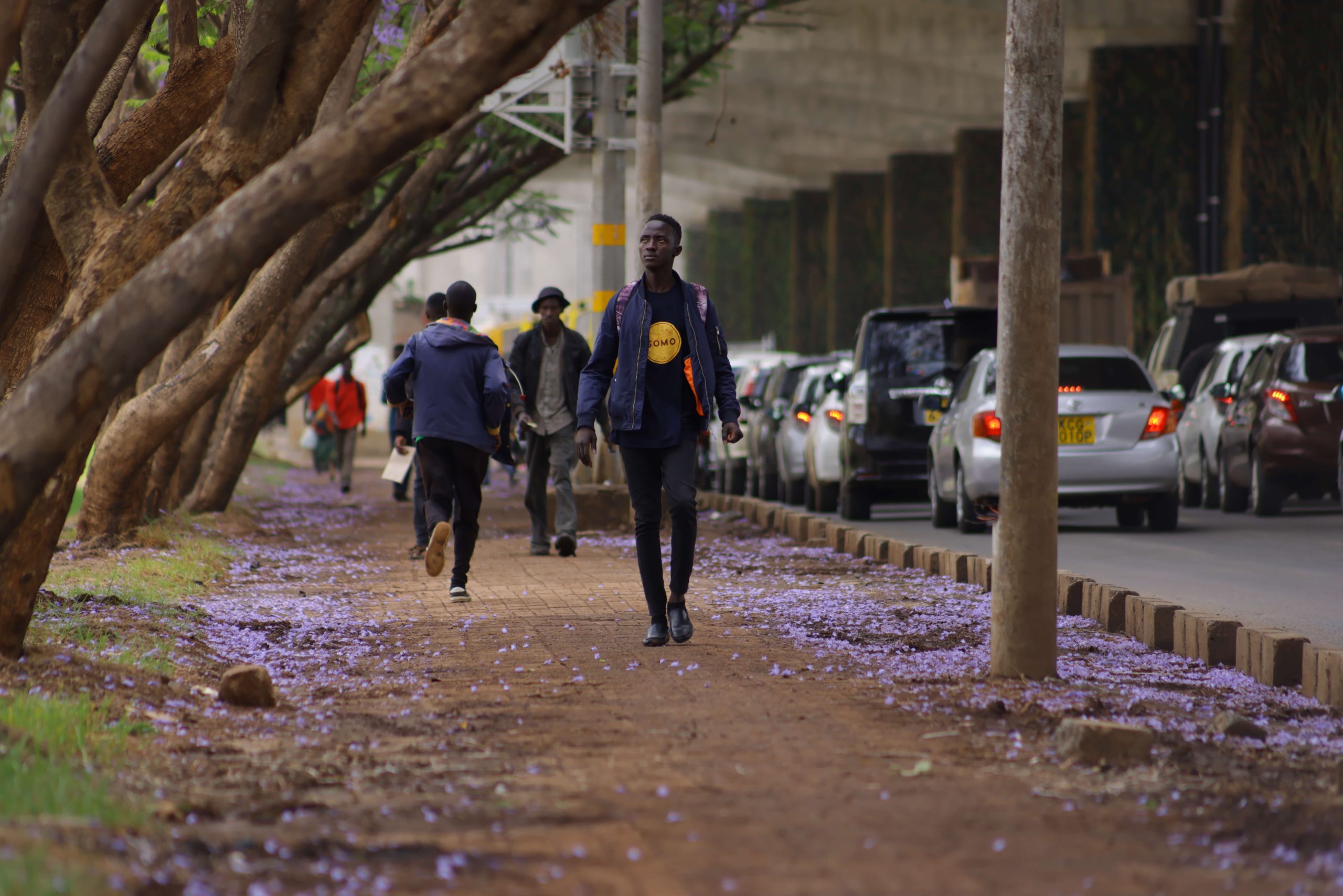They say the more things change the more they remain the same, but not for Nairobi. The Nairobi of four decades ago is worlds apart from the Nairobi of today, because the city has changed and little if anything remains the same when it comes to the city’s greenery and its built environment. Despite the cloudy grey skies and the humming and buzzing that fills the air today, Nairobi is a decaying capital when it comes to the green department. But be that as it may, one will stumble upon scanty clusters of lilac-green canopies along Uhuru Highway, Kenyatta Avenue and James Gichuru Road.

Whenever one encounters them in Nairobi, Jacaranda trees remain a wonder, gracefully standing with legs crossed at the ankles in the midst of streetlights, potholes and more recently the Nairobi Expressway, eavesdropping on the effervescent phone and in-person conversations which are imbued with innuendos, seriousness, lies, and in true Nairobi fashion, humour. More than anything, theirs is to add a much needed touch of beauty to the city in the weeks leading up to and during the country’s annual second rain season between November and December.
Like a number of exotic plant species in Kenya, Jacaranda trees are synonymous with urbanisation during colonial times. Although native to South America, the first Jacarandas planted in the city were planted in the 1920s, when Nairobi was the administrative capital of the East Africa Protectorate. They bode well with the soils and climate, and as more were planted and flourished, Nairobi became one of a handful of cities on the continent that boasted its Jacaranda wealth.
To this day, they quietly bloom, then rain, wrapping the ground on which the flowers fall. Their season adds an essential pigment as they beckon pollen harvesting bees and the honey eater bird species in hushed tones. The trees are neither confined by space nor time, and the older ones have garnered a tainted reputation for leaving pedestrian walkways in ruin. Propaganda, the trees will protest!
Yet, if you walk along Station Road—which links Workshop Road (in City Square, off Haile Selassie Avenue) to the Old Railway Station, where the Kenya Railway Museum is presently located—they stand with pride, like a smartly dressed choir ready to indulge you in a hymn, or performers ready for their curtain raiser cue—luring passers-by and transporting them back in time to the Nairobi Railway Station of old before the ‘80s when the old railway service in the country collapsed. So could these Jacarandas of this year be the same ones from back then? That may be, given that Jacarandas live up to 50 years on average. But what’s certain is that these trees never missed a season of bloom, and their purple–indigo, filmy flowers adorned various streets in the city for years.
As recent as 2018, major roads like Kenyatta Avenue—specifically outside Serena Hotel, Nyerere Road—which links Kenyatta Avenue to University Way and State House Road, Uhuru Highway, and Ngong Road which hosted an assortment of Jacarandas, have all been remodelled without consideration for Jacarandas. Previously mellow on these streets, most have since been mowed down and replaced with tarmac and steel—the two things slowly creeping into the city’s biographical sketch.
The roads in Nairobi have undergone serious botching and just like human plastic surgery, the too-muchness of it is starting to glare. More skyscrapers and dual carriageways have replaced the locales where Jacaranda trees previously stood, choking the air.
A cold breeze sweeps through the city day and night, growing stronger with each passing day as Nairobi continues changing face to meet standards of developing cities on the continent: more high-rises and boulevards, less evergreen. Construction threatens the existence of these purple hazes, weakening the city’s immune system. Nairobi is susceptible to climate change, so that the famed KoT hashtag #JacarandaPropaganda, first coined by writer Nanjala Nyabola in 2016, is bound to be rendered obsolete unless something drastic happens.



